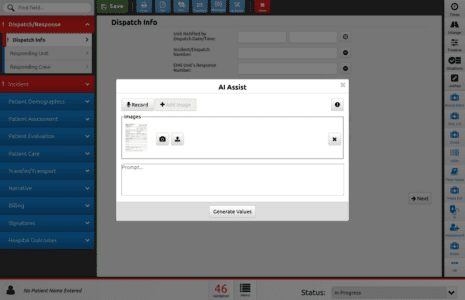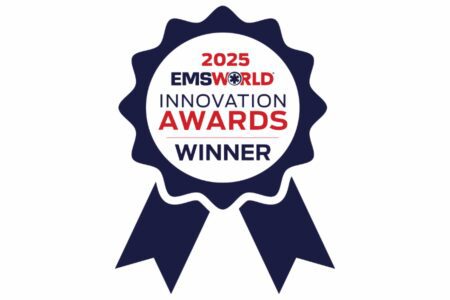A hospital’s operational lifeblood is data, but quality improvement only happens when that data reaches the right people in a usable form.
The common friction points are predictable: siloed teams, inconsistent definitions, limited access to timely information, and unclear ownership of follow-up actions.
To help hospital teams turn their data into insights they can act on, ImageTrend has put together a list of practical ways to use registry data to drive performance improvement (PI) agendas, dashboards, and action tracking.
Successfully implementing these processes, however, involves organizational commitment over the long term.
Why the Gap Exists Between Data and Quality Improvement
- Fragmented Systems: Clinical, registry, and operational data often live in separate applications with different owners.
- Definition Drift: Measures and case definitions vary by service line, facility, or analyst.
- Access and Timeliness: Teams get static reports too late to act, or they lack self-service views.
- Follow-Up Ambiguity: Action items aren’t consistently assigned, tracked, or closed.
When data, definitions, access, and ownership live in different corners of the hospital, quality stalls—even as the volume of information grows. Closing the gap starts with a shared metric library, connected systems, right-time dashboards, and clear accountability for follow-up. Align those four levers, and your PI meetings shift to focused discussions that support improvement.
Principles That Connect Data with Quality Improvement
Quality improves when everyone is looking at the same numbers, defined the same way, at the right time, and when every variance has an owner. The five practices below create a repeatable path from registry data to PI decisions and follow-through.
- Single Source of Truth: Establish where each measure originates (e.g., registry fields plus validation status).
- Shared Definitions: Maintain a library for every metric: numerator, denominator, inclusion/exclusion, period, responsible owner.
- Right-Time Visibility: Use dashboards and scheduled distributions to put the latest approved numbers in front of the PI committee before meetings.
- Traceability: Keep an audit trail from registry record to measure to agenda item to action item to closure.
- Closed-Loop Actions: Every variance generates an owner, due date, and documented resolution.
Turning Your Registry Data into a Performance Improvement Agenda
Transform PI from a loose discussion into a disciplined cycle that actually changes things:
- Before: Clean the data, lock the time period, flag problem areas.
- Build the agenda: Prioritize the biggest issues, link each topic to the exact metric and dataset, attach the dashboard/case list.
- During: Review trends, drill into cases, assign owners and due dates, define how you’ll measure success.
- After: Track status, recheck results at 30/60/90 days, and update definitions if needed.
Use this simple, repeatable flow each month or quarter:
Pre-Meeting (data prep):
- Lock your measurement period and refresh the metrics library.
- Validate records and run quality checks for completeness.
- Auto-flag variances against thresholds to propose agenda topics.
Agenda Build:
- Prioritize by volume and severity (e.g., high-impact complications first).
- Map each agenda item to its originating measure and dataset.
- Attach the dashboard link and any relevant patient-level case lists (properly de-identified for the audience).
In-Meeting:
- Start with the metric trend, drill into cases, and confirm contributing factors.
- Assign an action: owner, due date, intervention type (education, workflow, system, policy).
- Document expected effect and how success will be measured.
Post-Meeting Follow-Up:
- Track action status (open, in progress, complete, validated).
- Re-review closed items at 30/60/90 days to confirm sustained improvement.
- Update the definitions library if measurement logic changes.
What “Good” Dashboards Look Like for Performance Improvement
Effective PI dashboards support decision-making and follow-up. They tie every widget to a PI goal, allow filtering by service line, facility, provider, and time, surface outliers with thresholds/control limits, and enable drill-through from trend to cohort to case list—delivered ahead of the meeting and on demand.
Build around practical widgets like throughput intervals, complication/readmission trends, transfer timing, documentation completeness/validation status, and threshold-triggered case lists.
- Direct Line of Sight: Each widget maps to a specific agenda item or PI goal.
- Filterable and Comparable: Service line, facility, provider type, and time window.
- Variance Surfacing: Thresholds and control limits make outliers obvious.
- Drill-Through: From trend to cohort to case list for review.
- Distribution: Scheduled delivery before the PI meeting, plus on-demand access.
Suggested widgets (adapt to your programs):
- Throughput/time metrics (e.g., ED process intervals aligned to your standards)
- Complication and re-admission trends by service line
- Transfer and interfacility timing metrics
- Documentation completeness and validation status
- Case lists triggered by thresholds (for chart review)
Action Log Fields That Prevent Drift
Actions only stick when they’re structured. A disciplined action log prevents drift, supports audits, and turns PI decisions into sustained change.
Include these fields in every PI action log to keep work on track:
- Action ID
- Linked metric(s) and dashboard view
- Description of issue and contributing factors
- Owner and collaborating roles
- Due date and review cadence
- Intervention type (education, workflow, system, policy)
- Evidence of completion (artifact/attachment)
- Verification metric and timeframe for re-check
- Status and date closed
How ImageTrend’s Health Information Network Drives Hospital Quality Improvement
ImageTrend’s Health Information Network (HIN) brings four hospital-ready components together—Patient Registry, Reporting Solutions, Health Information Hub, and Market Intelligence—so data moves from capture to measurable improvement. Registry data is standardized and validated, surfaced in dashboards and scheduled PI packets, exchanged with EMS and hospital systems via HL7 and C-CDA, and enriched with EMS transport trends when context is needed.
Patient Registry: Supports trauma, burn, stroke, and cardiac registries; includes validations, audit trails, and submission-ready extracts; and supports reporting/analytics.
Reporting Solutions: Provides configurable dashboards and scheduled/on-demand reporting for PI.
Health Information Hub: Enables bidirectional, near real-time EMS–hospital exchange and outcomes return to EMS; supports HL7 and C-CDA.
Market Intelligence: Offers near real-time EMS transport/referral insights to inform throughput and planning.
Closing the gap between data and quality improvement requires shared definitions, timely visibility, and a closed-loop approach to action. HIN supports that flow end-to-end: validated, configurable data (Patient Registry); standardized dashboards and scheduled distributions (Reporting Solutions); bidirectional EMS exchange (Health Information Hub); and community-level context (Market Intelligence). Each component helps maintain a traceable path from record to measure to action—so your teams can focus on doing the work that improves care.
Discover how HIN solutions can help your hospital or trauma team support PI work. Book a demo today.




